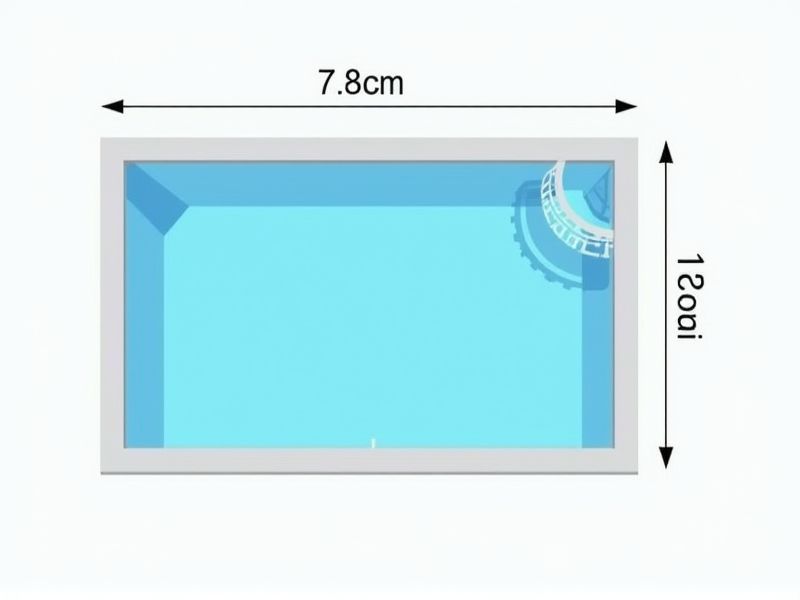
An Olympic-size swimming pool is standardized to ensure consistency across international competitions. The pool measures 50 meters in length and 25 meters in width, with a minimum depth of 2 meters. There are typically 8 or 10 lanes, each lane being 2.5 meters wide to allow swimmers ample space. These precise dimensions help maintain fairness for athletes and support accurate timing during events.
Length: 50 Meters
An Olympic-size swimming pool measures exactly 50 meters in length, adhering to international standards set by the Federation Internationale de Natation (FINA). This length allows for competitive swimming events, making it suitable for elite athletes. The pool's width is typically 25 meters, and it is at least 2 meters deep, ensuring optimal conditions for training and competitions. By meeting these specifications, your swim meets can gain official recognition, enhancing the competitive experience.
Width: 25 Meters
An Olympic-size swimming pool measures 25 meters in width, a critical dimension that facilitates competitive swimming events. The total length of such a pool is 50 meters, with a minimum depth requirement of 2 meters to ensure safety and performance. Each pool must be equipped with at least eight lanes, each 2.5 meters wide, allowing for standard race configurations. This stringent adherence to dimensions maximizes your experience during international competitions, aligning with the regulations set forth by the International Swimming Federation (FINA).
Depth: 2 Meters Minimum
An Olympic-size swimming pool measures a standard length of 50 meters and a width of 25 meters, with a minimum depth of 2 meters. This depth is essential to ensure safety and performance for competitive swimmers, allowing for proper diving and reducing water resistance. The pool's volume typically exceeds 2,500 cubic meters, providing ample space for various aquatic events. For optimal conditions, the water temperature is usually maintained between 25degC to 28degC during competitions, supporting peak athlete performance.
Lanes: 10 Lanes
An Olympic-size swimming pool measures 50 meters in length and 25 meters in width, standardizing competitive swimming events. The pool features 10 lanes, each typically 2.5 meters wide, providing ample space for athletes during competitions. With a depth of at least 2 meters, it facilitates safe and efficient racing conditions, minimizing wave interference. Your experience in such a facility can enhance performance, as the design caters to the highest standards of the sport.
Lane Width: 2.5 Meters
An Olympic-size swimming pool measures 50 meters in length and 25 meters in width, providing a total area of 1,250 square meters. Each lane in the pool is designed to be 2.5 meters wide, accommodating competitive swimmers efficiently. These specifications ensure compliance with international regulations set by FINA, the governing body for aquatic sports. Your understanding of these dimensions is crucial for hosting legitimate swimming competitions.
Volume: 2,500 Cubic Meters
An Olympic-size swimming pool measures 50 meters in length, 25 meters in width, and must maintain a minimum depth of 2 meters, resulting in a total volume of 2,500 cubic meters. This considerable volume ensures the pool can accommodate up to 10 lanes, each measuring 2.5 meters in width. The water temperature typically ranges from 25degC to 28degC, providing optimal conditions for competitive swimmers. Having precise measurements and standards enhances the integrity of races and athlete performance during events.
Water Temperature: 25-28°C
An Olympic-size swimming pool, measuring 50 meters in length and 25 meters in width, is designed for competitive events with specific standards, including the water temperature, which is ideally maintained between 25degC and 28degC. This temperature range ensures optimal performance and comfort for athletes, allowing them to compete at their best. Proper temperature control is crucial, as it also affects factors like hydration and muscle function during intense swimming competitions. If you are preparing for an event, consider the importance of training in conditions that mimic these standards.
Starting Block Height: 0.5-0.75 Meters
The height of starting blocks in an Olympic-size swimming pool is standardized at 0.5 to 0.75 meters. This specific range ensures optimal performance and safety for competitive swimmers during races. Designed to maximize launch efficiency, these blocks are crucial in providing athletes with the best possible start. In total, an Olympic swimming pool measures 50 meters in length, allowing for a rigorous competitive environment.
Wall Markings: Contrast Color For Visibility
In an Olympic-size swimming pool, measuring 50 meters in length and 25 meters in width, wall markings play a crucial role in enhancing the visibility for swimmers. These markings are typically designed using high-contrast colors, such as white or yellow against a blue background, to ensure clear visibility even in various lighting conditions. Standard placements include the lane lines, which are positioned at 0.5 meters from the wall, guiding swimmers effectively during races. Ensuring these wall markings comply with FINA regulations contributes significantly to the overall safety and performance of athletes in competitive events.
Overflow System: Continuous Outlet Rim
An Olympic-size swimming pool measures 50 meters in length and 25 meters in width, adhering to the stringent regulations set by FINA. The continuous outlet rim, part of a sophisticated overflow system, ensures effective water circulation and maintains optimal water levels. This design minimizes wave formation, allowing for improved performance during competitive events. Ensuring that your pool meets these specifications can enhance both athlete experience and overall safety.
